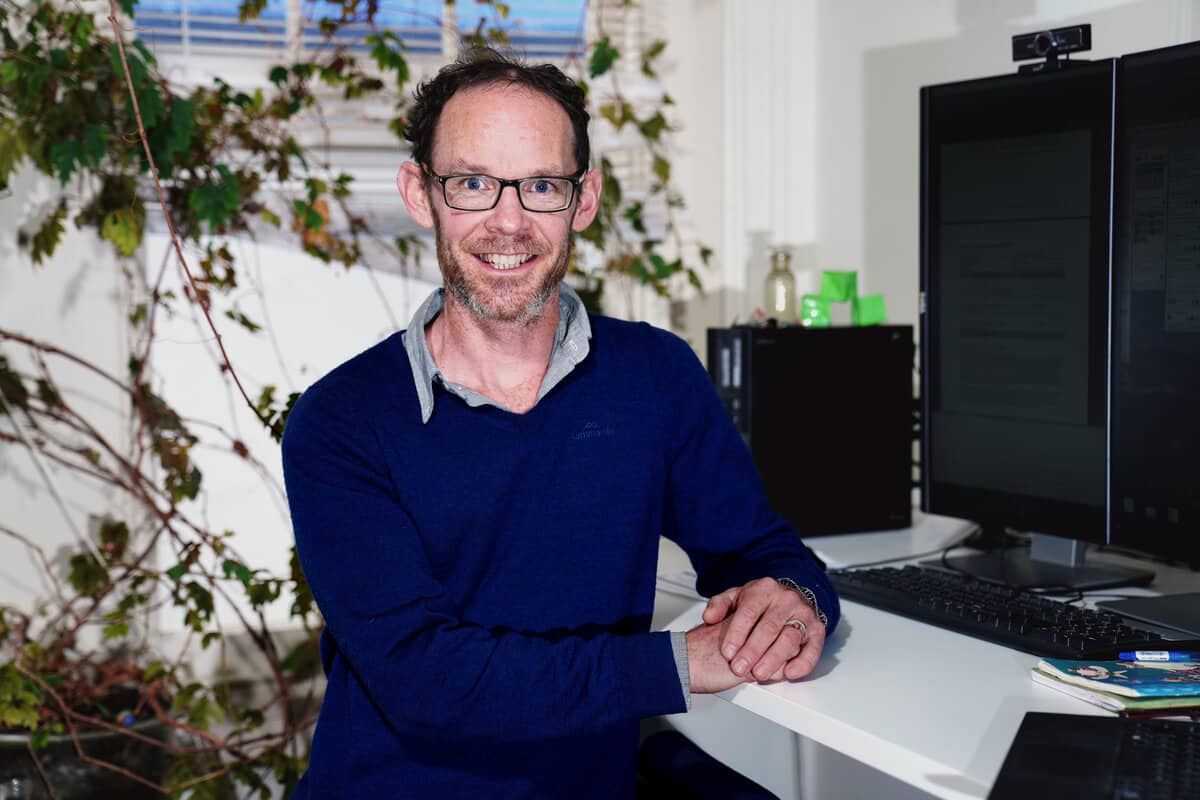Opinion: Why robust and consistent environmental monitoring is critical to improving freshwater health in Aotearoa
by Eric Goodwin
26 September 2021
Sometimes when we read or listen to the news, the amount of negative reporting about the state of our freshwater environments can be overwhelming. However, there is another perspective we can adopt when processing difficult information about the environmental challenges we face, and one which may make us more hopeful: the fact that we have hard news to share is good news in itself! Confused? That’s understandable, so allow me to explain.
Developing reliable freshwater monitoring systems in Aotearoa has always been a challenge. We are a small country population wise, with a large land area we are responsible for, and an enormous number of waterways that we would like to be able to monitor. If we want to improve the quality of our streams, lakes, rivers and wetlands, we first need to understand their health, and to do that we need robust environmental monitoring systems. We also need this monitoring to happen regularly rather than ad-hoc.
As you can imagine, this is a resource intensive process, and those of us who work in the freshwater sciences and freshwater environmental management sectors will always push for as much monitoring activity as we can resource because when we know better, we can do better. In the case of freshwater health, bad news is much better than no news, because we can’t manage what we don’t measure.

Image: Cawthron Institute’s Eric Goodwin
Under New Zealand’s Resource Management Act 1991, local authorities are responsible for freshwater management and for monitoring and reporting on freshwater quality. Guidance about how they should do this is provided in the National Policy Statement for Freshwater 2020. In 2014, Land Air Water Aotearoa (LAWA) was established by New Zealand’s 16 regional councils and unitary authorities so that they could openly share the environmental monitoring data they collect to help inform all New Zealanders about our environment. LAWA is now a partnership between the councils, Cawthron Institute, the Ministry for the Environment, the Department of Conservation, Statistics New Zealand and has been supported by the Tindall Foundation and Massey University. The LAWA website presents freshwater monitoring data for more than 1500 individual sites across New Zealand and produces an annual River Water Quality National Picture Summary. Cawthron Institute’s role is to analyse and validate the monitoring data collected by the local authorities to produce the National Picture Summary each year and provide insight into the trends that are occurring in the data.
My role as an environmental data scientist is to process and analyse the data. One of the first things we do is ‘groom’ it, so that we’re sure we’re comparing apples with apples. We check that the units of measurement are consistent from council to council, and we compare the groomed data for each site against national performance standards as well as compared to other sites in similar locations. When we’re sure we have good quality data to work with, we run a ‘trend analysis’, which is a statistical procedure used to detect a tendency for an indicator to increase or decrease over time, which might not be evident due to natural seasonal variability in the data, or which might be apparent but in fact not statistically significant. This is an important way of checking that the comparisons we are making between sites in similar situations, or comparisons of the same sites over time, are fair and accurate.
These data, regularly collected from the network of sites, are stored at each council in their databases, building up over time. Because the LAWA website presents information at a national, regional, and catchment level, as well as data for individual monitoring sites, people can see which areas tend to have waterways in better condition, and which areas are worse affected. They can also see which areas seem to be improving, and which areas seem to be degrading, and relate those impressions to knowledge of activities and restoration efforts in those areas.
The national standards that data are evaluated against generate grade scores, ranging from A to D for most attributes, and from A to E for E. coli. These grade scores allow us to condense a whole lot of complicated data into information that is easily digestible for the wide variety of audiences who are interested, from school children and community groups through to government regulators.
Some of the key things the LAWA data can tell us include the levels of various key chemical contaminants in the water, what the visual clarity of the water is, whether it is safe for humans to swim in, and the make-up and health of macroinvertebrate communities of bugs and insects that live in these freshwater environments. When we have data about the factors that might be having an effect on an ecosystem, like the presence of chemical contaminants, and data demonstrating an ecosystem response to a stressor, like information about the health of the macroinvertebrate community in that same ecosystem, we can start to form a picture of what the impacts and responses of different stressors are in different ecosystems. This gives us a better sense of which steps taken to protect or enhance freshwater health are likely to be successful.
The next National Picture Summary is released this Sunday on World Rivers Day, an annual global event that celebrates the world’s waterways and aims to increase public awareness of the importance of caring for our rivers. This year’s report will highlight some of the challenges facing our freshwaters in Aotearoa and provide us with the information we need to start making positive changes to turn things around. We know we’ll have to be patient though, because one challenging insight that monitoring programs like those published through LAWA show is that the juggernaut of environmental degradation can take a long time to slow down and turn around, and it can be some time before restoration efforts are rewarded with measurable improvements.
If you want to be inspired by examples of people who are acting on this information and doing their best to make a difference, check out some of the profiles of the 2021 New Zealand River Awards entrants that we have shared via Cawthron’s website. Cawthron took on the responsibility of delivering the New Zealand River Awards because it aligns brilliantly with our aim to contribute to protecting and restoring freshwater health in Aotearoa. We’re involved at every level of freshwater management in New Zealand, from designing monitoring tools and collecting and analysing data, to providing advice about management and restoration efforts. Naturally, we were eager to help celebrate and acknowledge the success of individuals and groups who are making major efforts to improve freshwater health.
This year’s entrants include people from all walks of life, just like you and me, who have got involved in a river or catchment community initiative to restore the health of a freshwater environment. It’s not too late, or too hard, to make a big difference if we work together to protect something we all value and depend on. If you’re looking at the LAWA National Picture Summary this year, perhaps you might like to take note of the results for some of your local waterways and do some research to find out if there are groups in your community that are working towards improving waterway health. If we all look for opportunities to get involved and play our part, we could make a really big difference that will protect and enhance our freshwater health for the generations to come.
